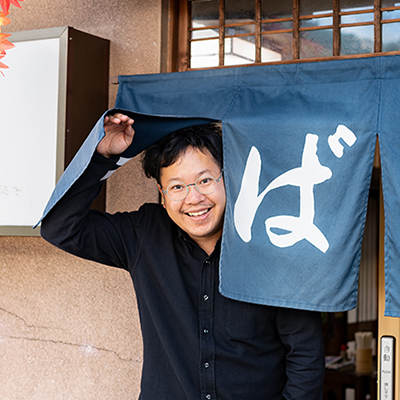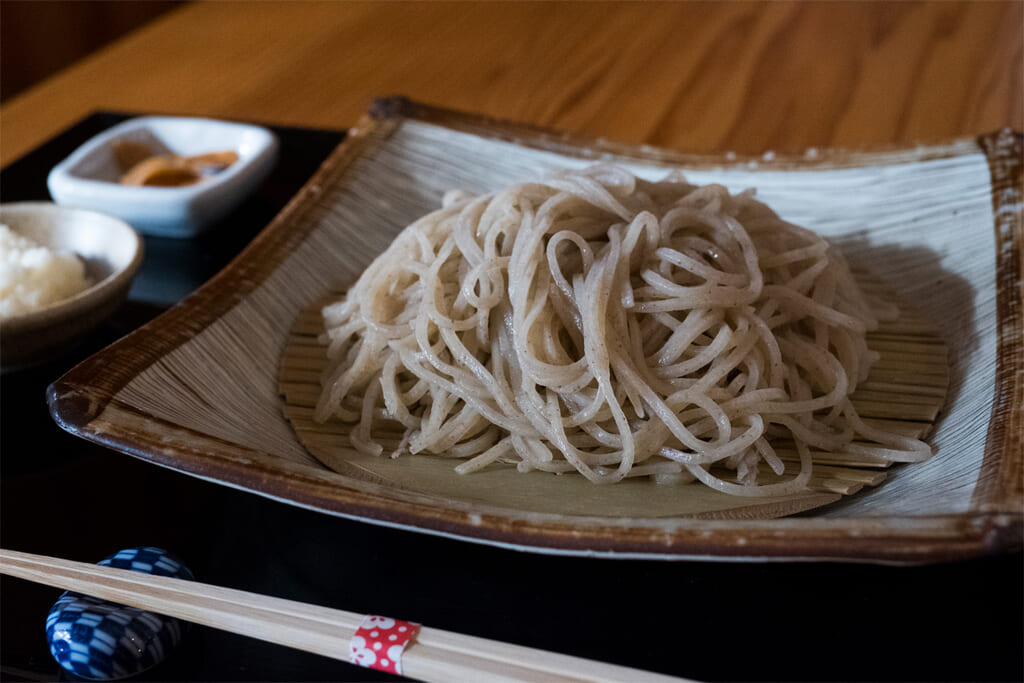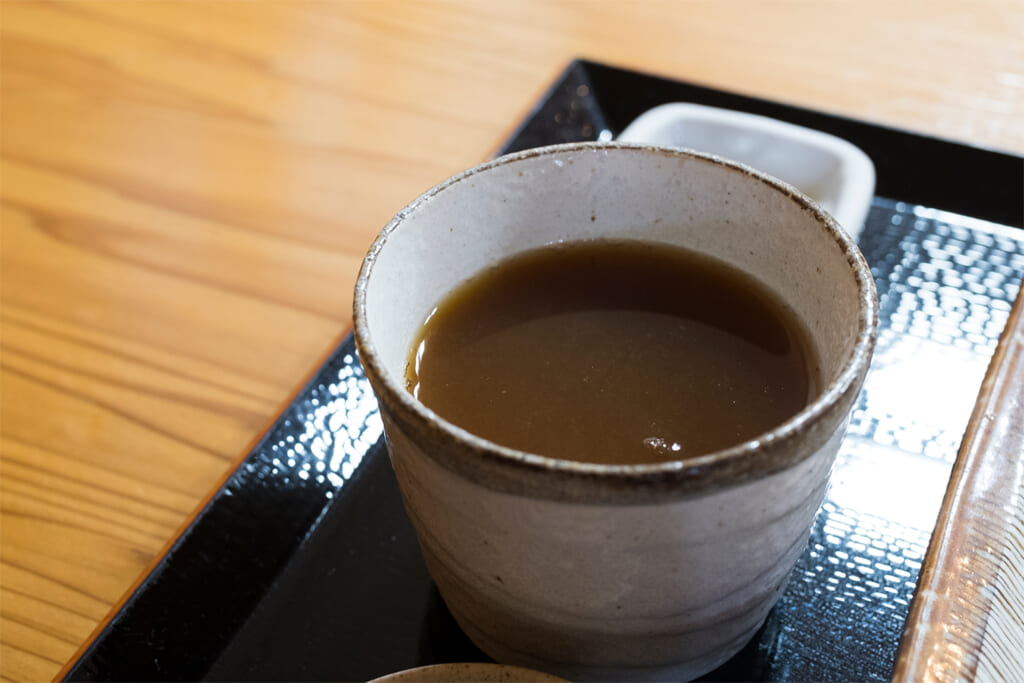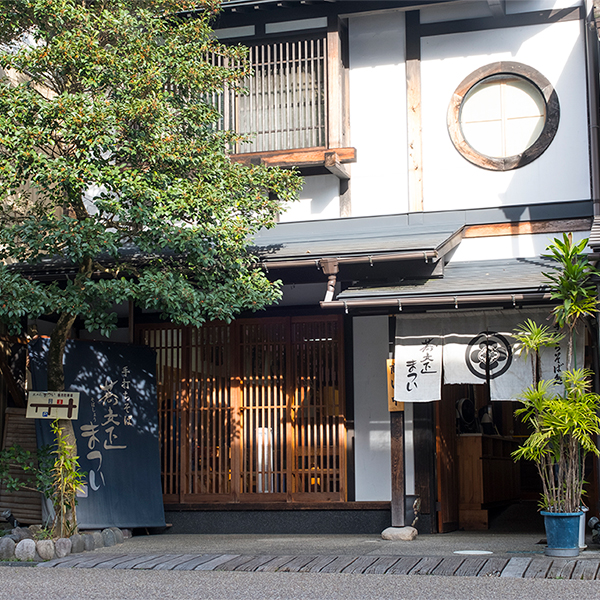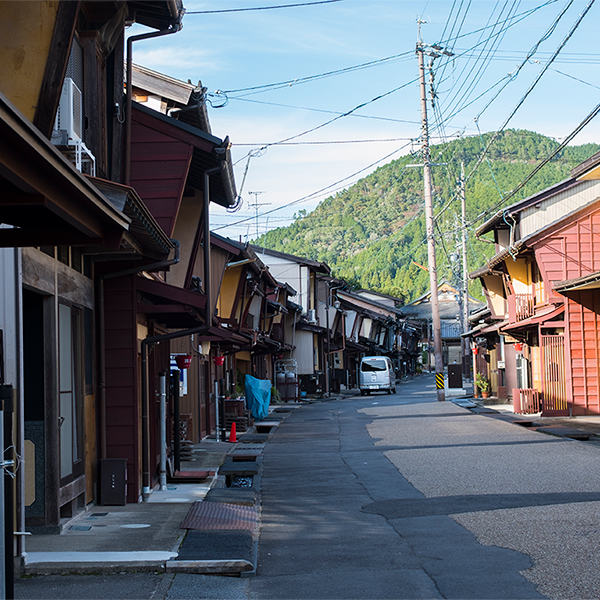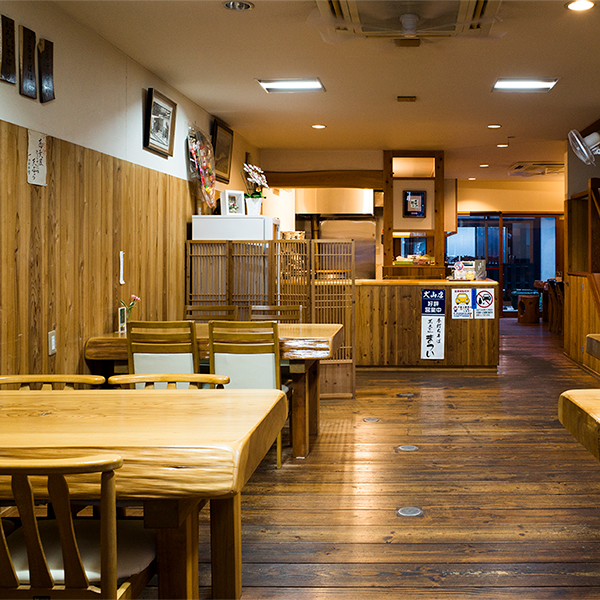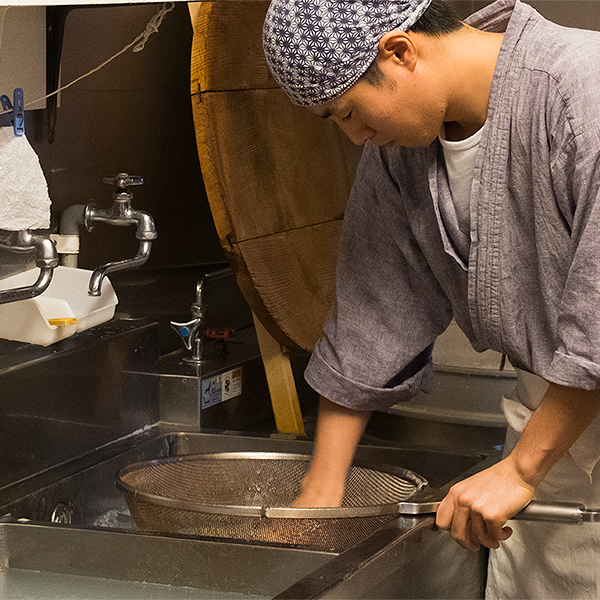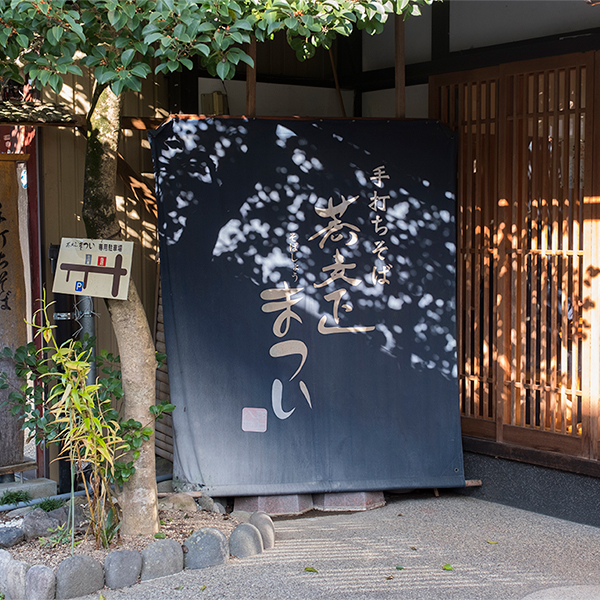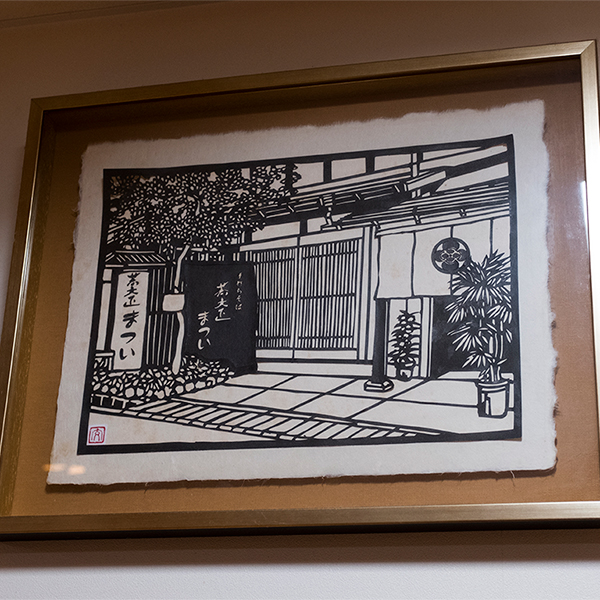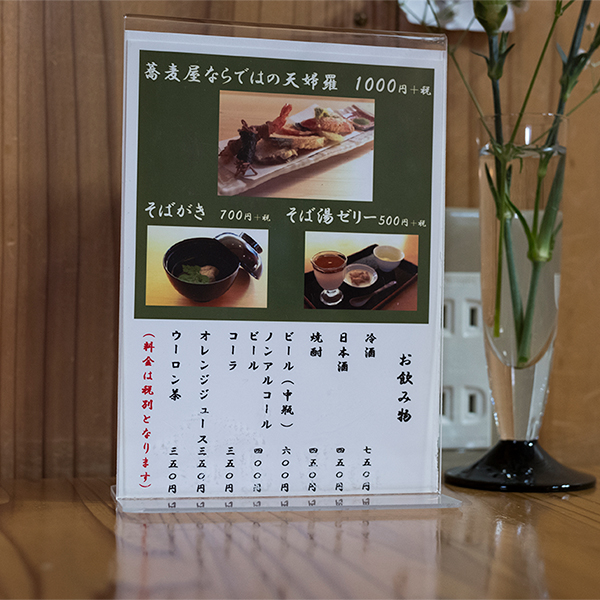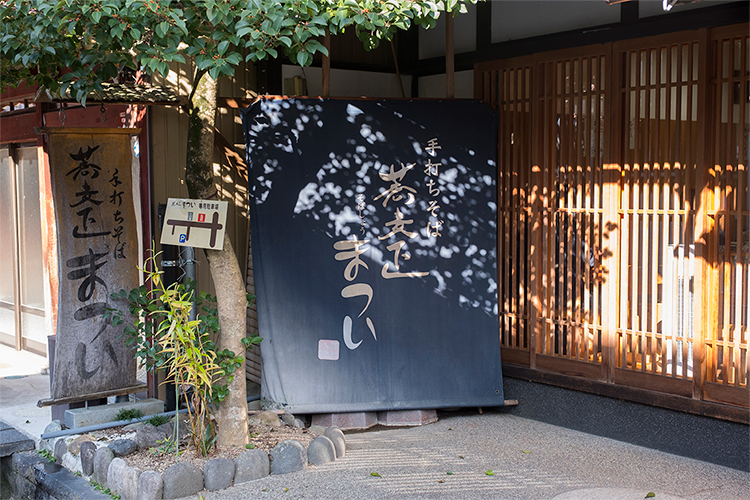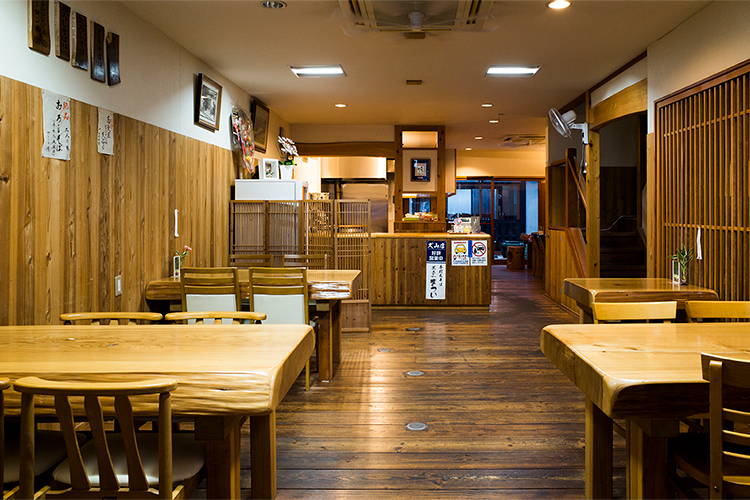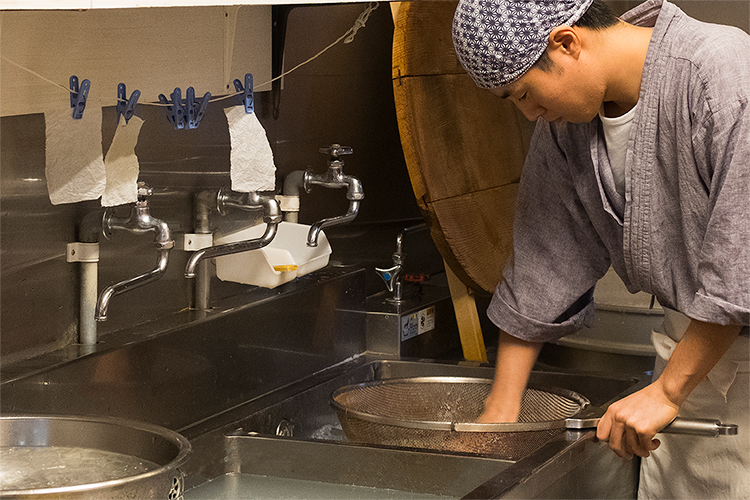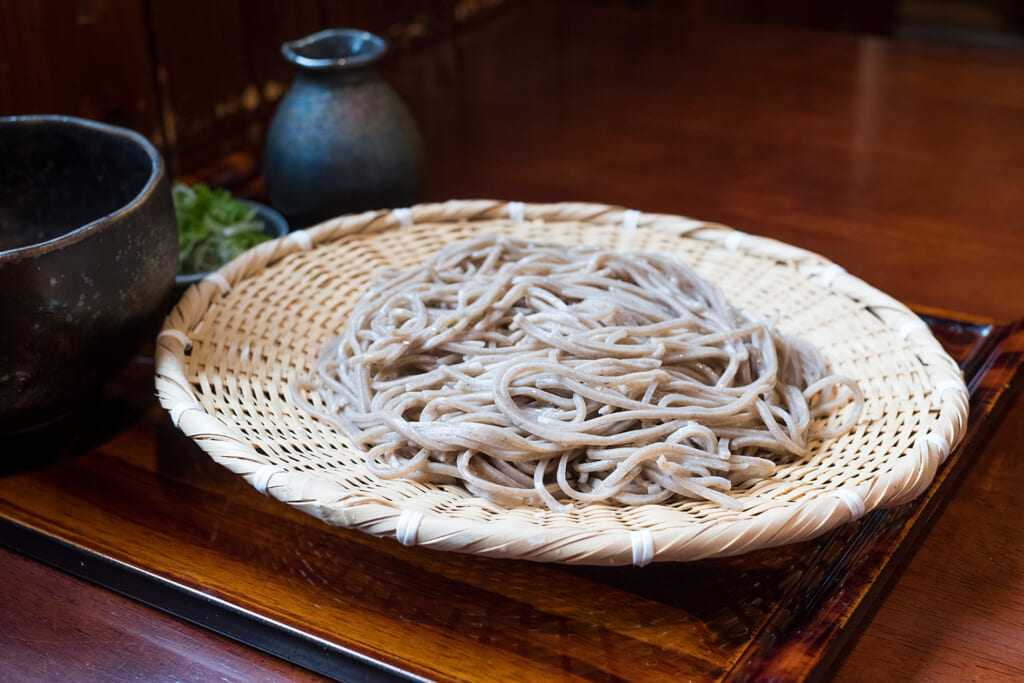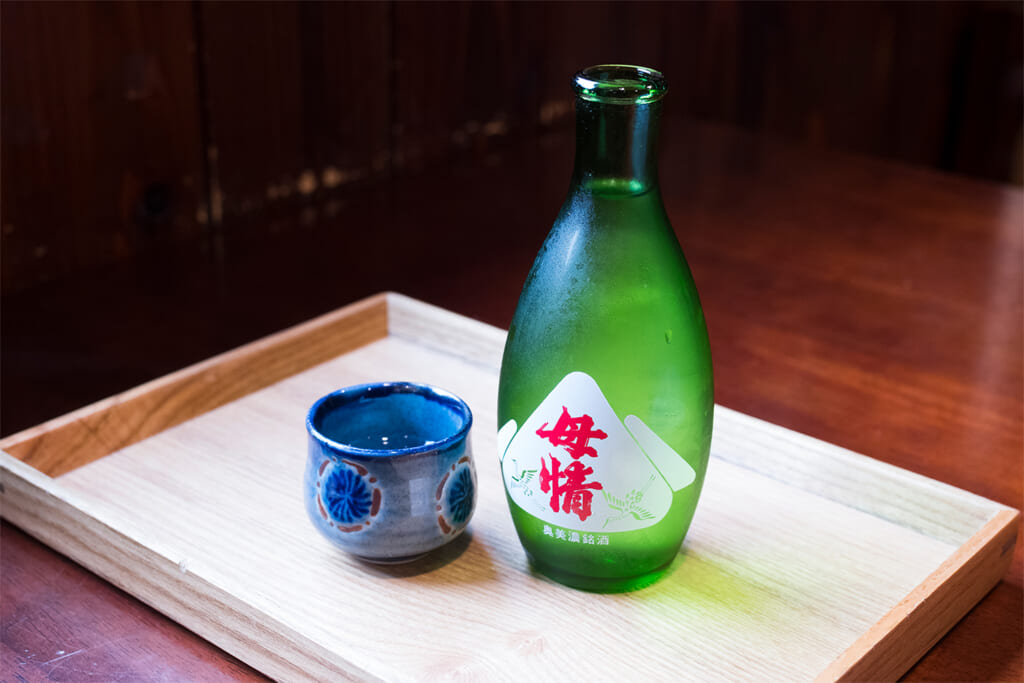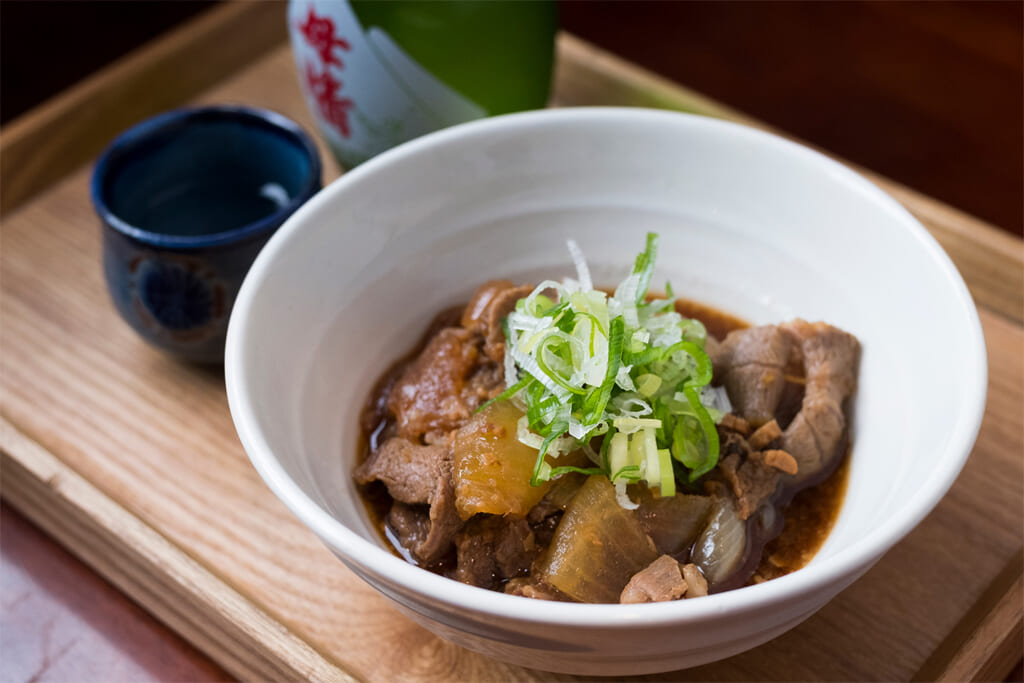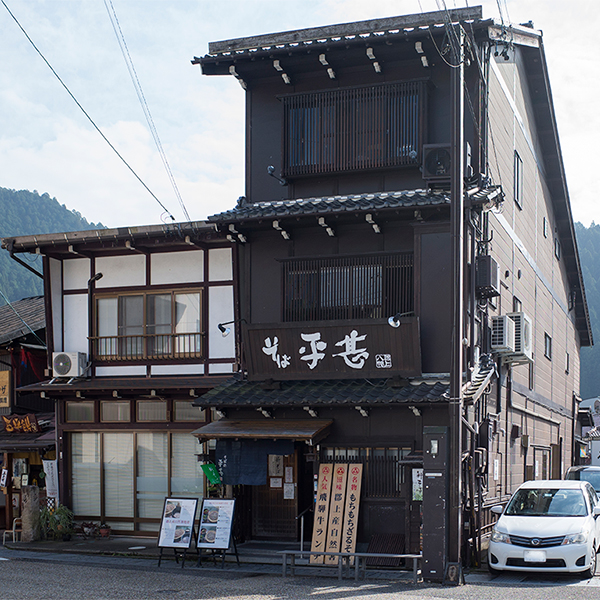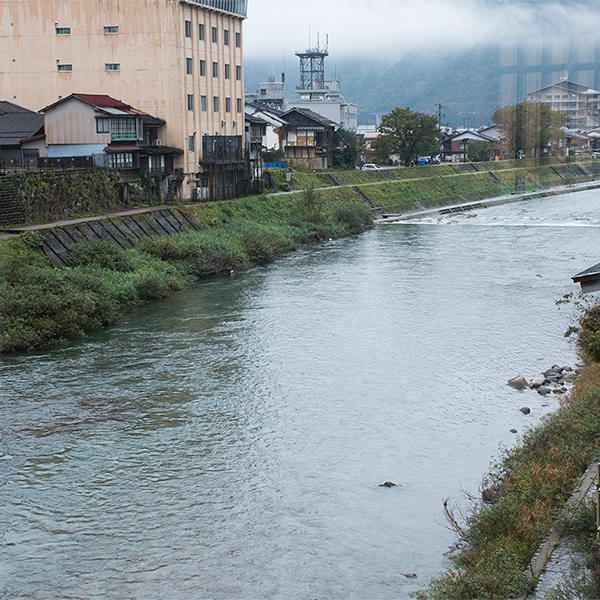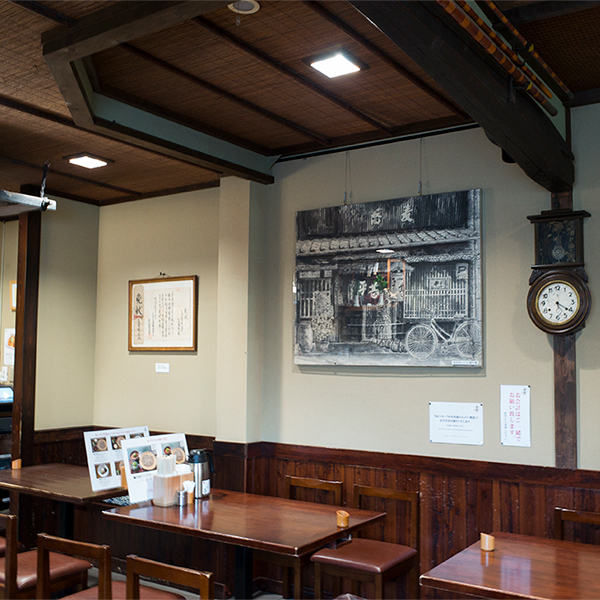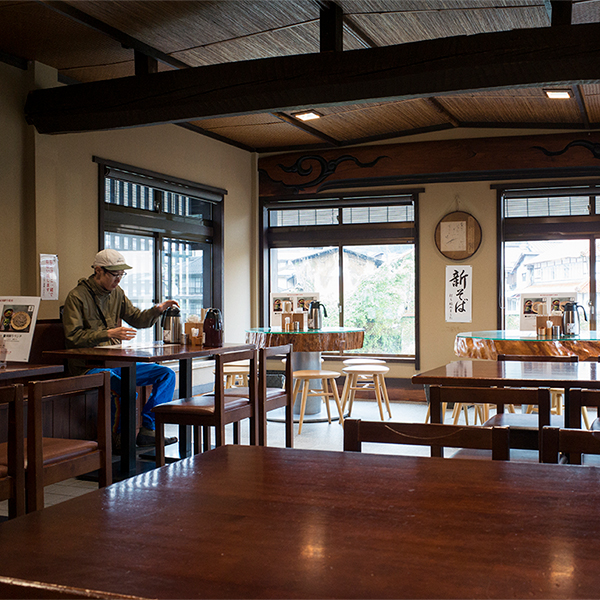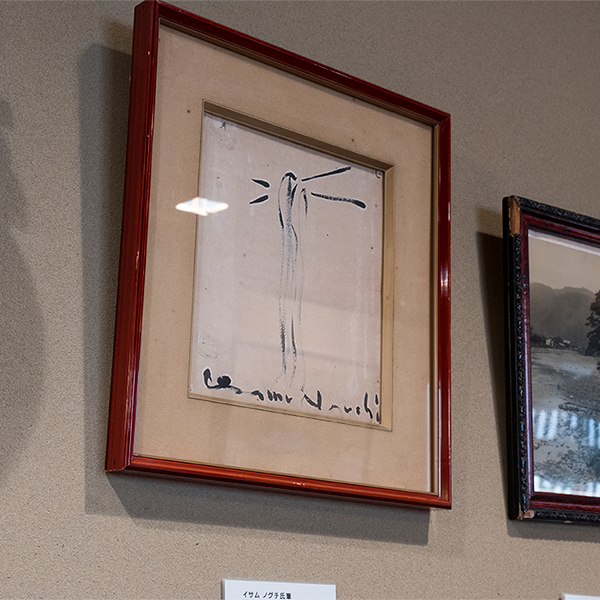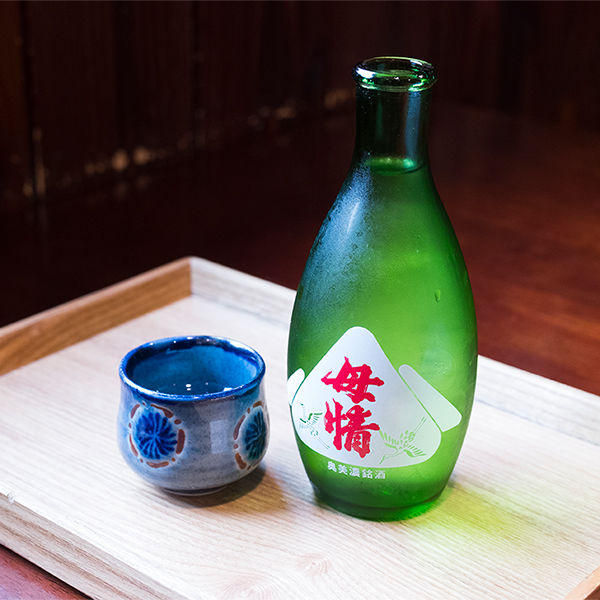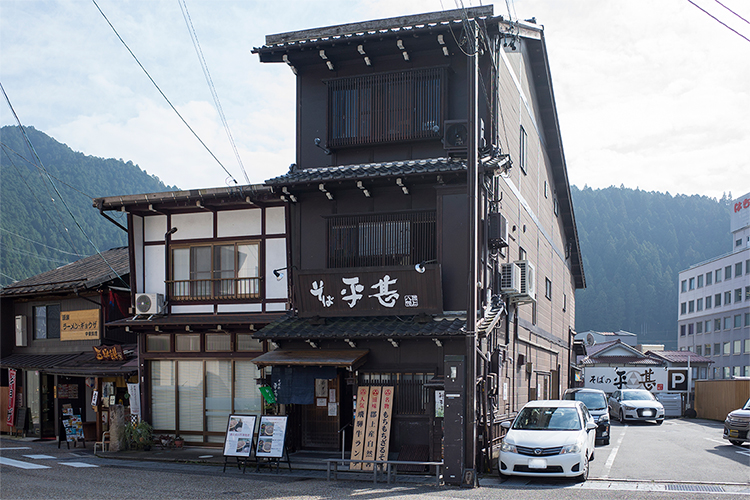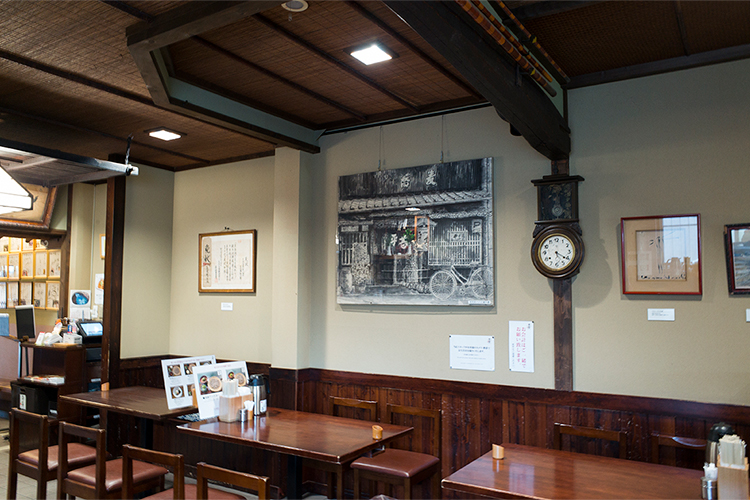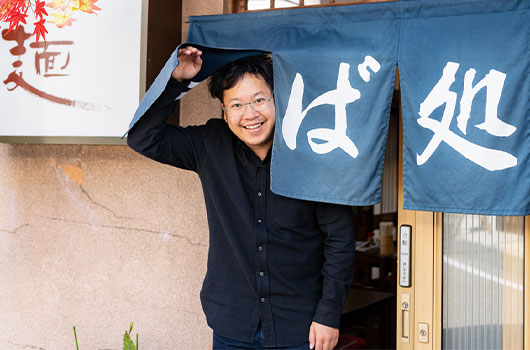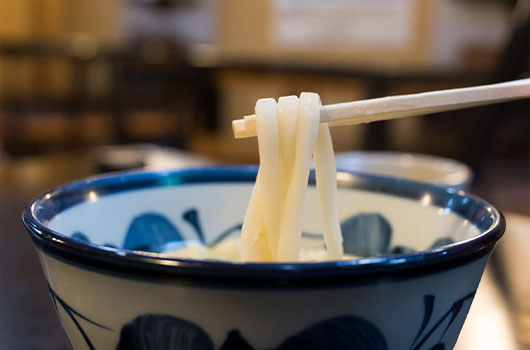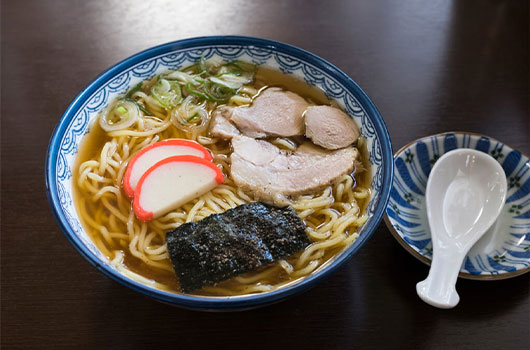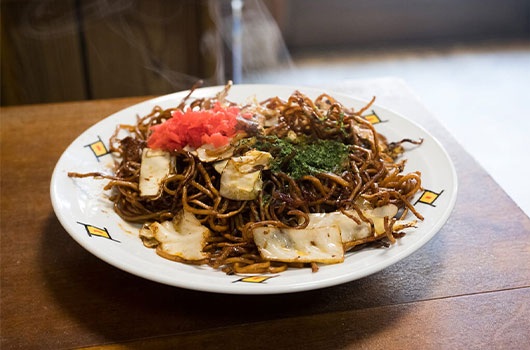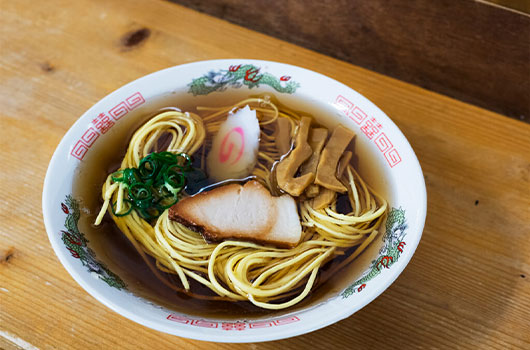Soba-sho MatsuiCold Soba on bamboo colander or
Hot Soba with grated radish,
amazed by the 2 choices
My first destination is “Soba-sho Matsui”, which started business from 17th September 2009 and has a sister shop in Inuyama-shi, Gifu-ken. “My father quitted his office job and got fascinated by Soba so he started this Soba restaurant.” the second generation Mr Takashi Matsui said. His father took the name of the restaurant “Soba-sho” in Takayama-shi where he received training and added his own surname for the name of his restaurant. The front of the restaurant is very modern. The ceiling of the entrance is higher for enhancing his morale. Only table seats are available and spaces between seats are wide and comfy.
So, what should I have today? You may need “Sobamae (Before Soba)” means you need to get some sake and snacks before having Soba. The other kind of Soba restaurant is Soba only. “Matsui” is the latter. Moreover, all you can see on the menu is “Zaru-Soba (Cold Soba on bamboo colander)” and “Oroshi (Hot Soba with grated radish). There is assorted tempura but not “Ten-zaru (Cold Soba with tempura)”. I am amazed by how the restaurant concerned about its details. It makes me feel so pleased.


